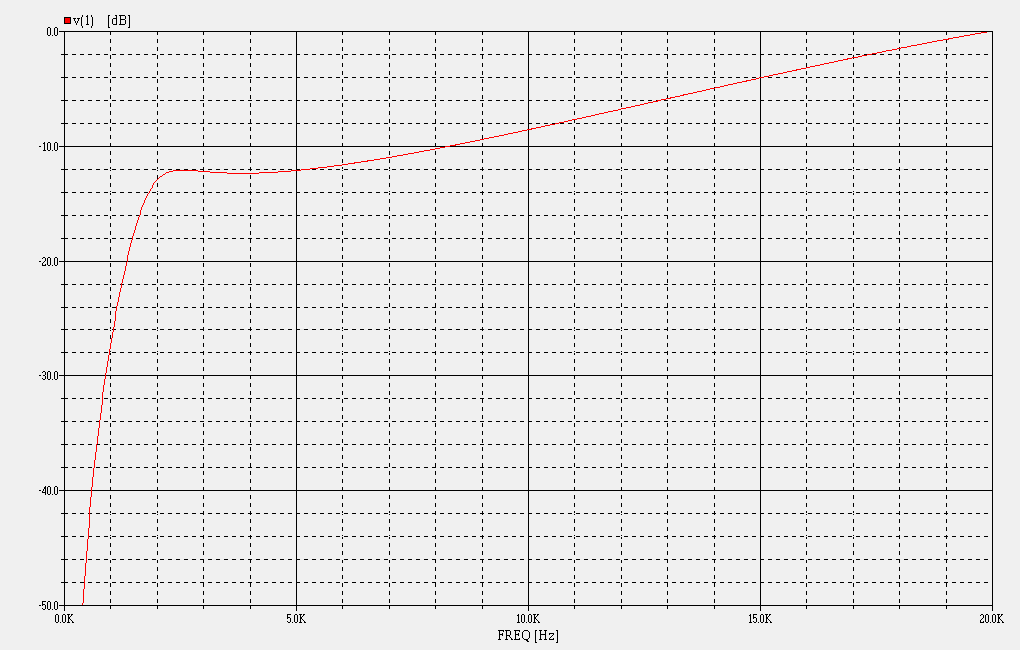

Posted by Wayne Parham [ 70.234.129.7 ] on February 07, 2009 at 12:36:40:
In Reply to: Erse caps, attenuation circuits. posted by dB on February 06, 2009 at 23:39:01:
I have used Erse capacitors, in fact, they're in stock now and they are used on some of the crossovers I provide as kits or in finished products. I consider them to be about the same quality level as Solen caps. Here's a post I wrote a little while back on what components I use and why:
The R1/R2/C1 configuration for top-octave compensation is something I came up with a long time ago, using Spice. There are other strategies for providing the requisite CD equalization, but some are more complex than I think is necessary or desirable. My approach does three things: 1) It provides woofer/tweeter level matching padding using a resistor divider, 2) Padding is bypassed by a capacitor to provide 6dB/octave augmentation above mass rolloff, and 3) Specific damping of the splitter filter is set, mildly underdamped so the amplitude near the crossover frequency is slightly elevated. This causes an initial shelf of flat response up to mass rolloff, where top-octave augmentation begins.
You could rearrange the R1/R2 values or use an L-Pad after the R1/R2/C1 network. I've seen people do it, some with good results. However, I always recommend against it for best results. The reason is simple: The best compression drivers need a full 12dB of CD equalization and any padding you might provide outside the compensation network would reduce the level of top-octave augmentation available.
Think about it. If your woofer is 12dB less sensitive than your tweeter, then you only have 12dB padding to work with. If you need 12dB augmentation to provide CD equalization, then you need the full amount of padding to be removed at the highest frequencies. There's nothing left to provide for variable attenuation.
The best compression drivers have a fairly smooth mass rolloff slope. Amplitude response falls at a constant rate of 6dB/octave, starting around 4kHz to 6kHz. That's two octaves from 20kHz, so the augmentation spans approximately 12dB.
There is a synergy here, and I find that the best implementations are those with good quality high-efficiency midwoofers that are about 10dB to 12dB less sensitive than the tweeter on its horn. Everything comes together. The tweeter circuit matches its sensitivity with that of the midwoofer, and equalizes the response curve through the top octave. The crossover frequency chosen is where horizontal patterns approximately match. This and the spacing of woofer to horn sets the vertical nulls outside the tweeter's vertical pattern at HF. When properly done, on-axis response is flat, and directivity is uniform so off-axis response is also flat over a wide horizontal arc.
On the other hand, I have seen cheap compression drivers with lots of breakup in the top octave. The inexpensive Selenium drivers are a good example. Mass rolloff starts reducing output but diaphragm breakup starts making resonant peaks that increase output in the top octave. This kind of behavior adds "sparkle" and sounds good at first listen, but I find it to be a little harsh, especially when listening long term.
Whether you like them or not, the best implementation of such a device is to not add in full top-octave augmentation, don't provide the full 6dB/octave rise. Reduce it by some amount, so the HF breakup peaks don't rise above the midband level.
There are a number of ways to reduce the amount of top-octave compensation. Padding the output of an R/C filter reduces the augmentation just as much as it reduces the midband level. So you can install a fixed voltage divider or variable L-Pad after the R1/R2/C1 network. Choose values for R1, R2 and C1 that provide 8dB attenuation, for example. Since there is only 8dB attenuation, there can be only 8dB augmentation from the bypass capacitor. Then install an L-Pad or fixed voltage divider after that to provide the rest of the padding. That's one way to provide top-octave augmentation but not allow it rise a full 12dB over two octaves.
There are a number of ways to juggle the values and perhaps rearrange their order to get different results. The method I've suggested provides the right curve for a "pure" 6dB/octave slope that starts around ~5kHz. That makes the augmentation full in by 20kHz. You can increase the value of C1 to bring augmentation in sooner. But if it is made too large, it simply bypasses the padding, removing both level matching and equalization. R1 and R2 values set the amount of padding and the shape of the low end of the curve. Smaller values of R1 reduce the amount of padding. It also slightly increases damping, rolling off the low end a little more. Larger values of R1 obviously have the opposite effect. Smaller values of R2 increase damping, rolling off the bottom end. Larger values of R2 decrease damping, making the initial shelf rise. Go too far and a peak near the crossover frequency will result. See the link below for more information.
In the end, if you're using a high quality compression driver on a well behaved CD horn or waveguide, this is the response curve you want. This is what the π Crossover provides:

[ PiSpeakers Forum ] [ Help ]